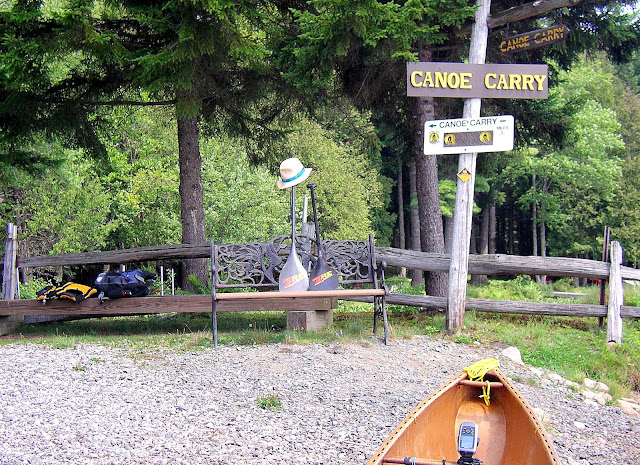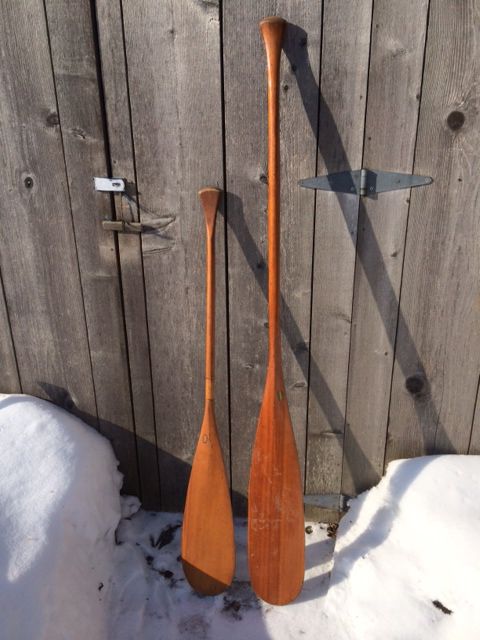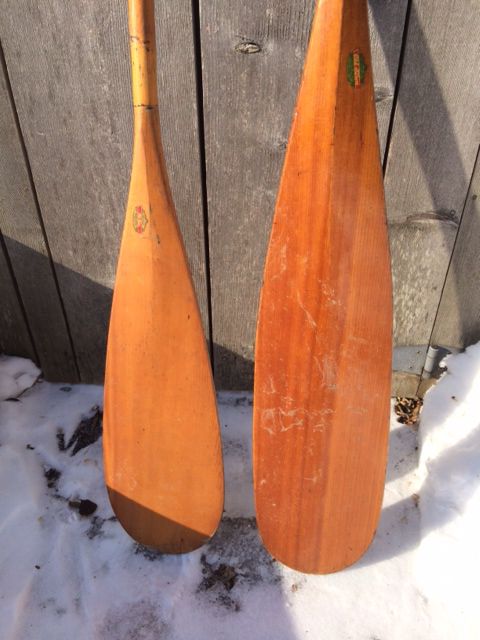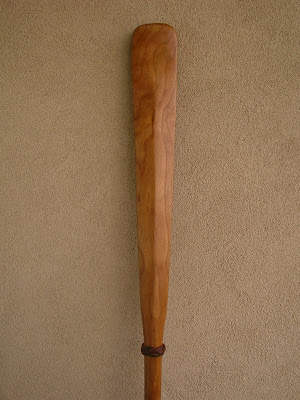After more than 50 years of paddling with wooden paddles of many kinds, I have ditched them all in favor of ZRE carbon paddles. For me now, function completely trumps form in paddles. Function most importantly includes light overall weight, effortless swing weight, thin blade for surgical slicing, maximum propulsive force per square inch, all within a fairly small footprint.
After this half a century of personal paddle evolution, including designing my own wooden paddle made by Brad Gillespie, my perfect paddle has all culminated in the ZRE Power Surge bent paddle. I have narrowed all my paddle usage to a 48.5" ZRE Power Surge bent, which I use 90% of the time, and a 57" ZRE Z with symmetrical blade faces, which I use mainly in rivers and very windy/wavy lake conditions. I was very fortunate to get a symmetrical carbon grip for my straight ZRE.

I've been using bent shafts, from several makers, in preference to straight shafts for lake and other flatwater paddling for 35 years. And I'm a kneeler more than 90% of the time on lakes and almost 100% of the time on rivers. I see no benefits to a straight paddle for paddling straight ahead on flatwater, and straight ahead strokes are what I do 99.99% of the time on flatwater. I'll go to a straight paddle on whitewater, twisty rivers, when I want to palm roll a lot for freestyle play, or when I want leverage in pushy or windcocking wind/wave situations on lakes.
Bents are far more efficient and can be much shorter than straights on flatwater, because the most effective stroke technique is to push at a downward angle with the grip arm while doing a stomach crunch. Short, light, bent paddles are much easier to flip over the gunwales when switch paddling, especially at high stroke rates. They are also more comfortable for me when cruising at my modest speeds with single-sided correction strokes. While the bent can't do as powerful a J correction as a straight paddle, practiced technique easily compensates for that. And who the heck would want to do a tiresome J stroke, anyway, when they can do combinations of C strokes, pitch strokes and, best of all, Canadian strokes.
The ZRE Power Surge -- designed by Bob Zaveral, Serge Corbin and Olympic Gold Medalist Greg Barton -- has the optimal paddle shape and curvature for me. It's an asymmetrical blade. The power face is lipped and has shallow scooped areas on each side of finely foiled spine. This provides maximal power per square inch of blade face.
As for wooden paddles, laminated paddles are clearly superior to solids in my experience. They can be made with softer, lighter woods and yet be stronger than solid wood and often club-like paddles of ash, cherry or some other hard wood.
I also don't care for long-bladed animal tail paddles because, unless they are made with extremely narrow quill blades or with dangerously thin blades, they are too heavy overall and, more damningly, too blade heavy for repetitive air recoveries. They are better used when kept submerged with palm-rolled in-water returns, but I'm not going to paddle long distances with that technique.
The wooden paddles I like best have a Honey Island blade shape, about 8.5" x 19", and fairly large, hand-filling grips with thumb indentations on each of the four corners. I also like the throat below the grip to be long and wide enough to grip laterally. That's how I designed my Gillespie Free, but I don't seem to have a picture of that paddle handy. Maybe I'll take and post some.














